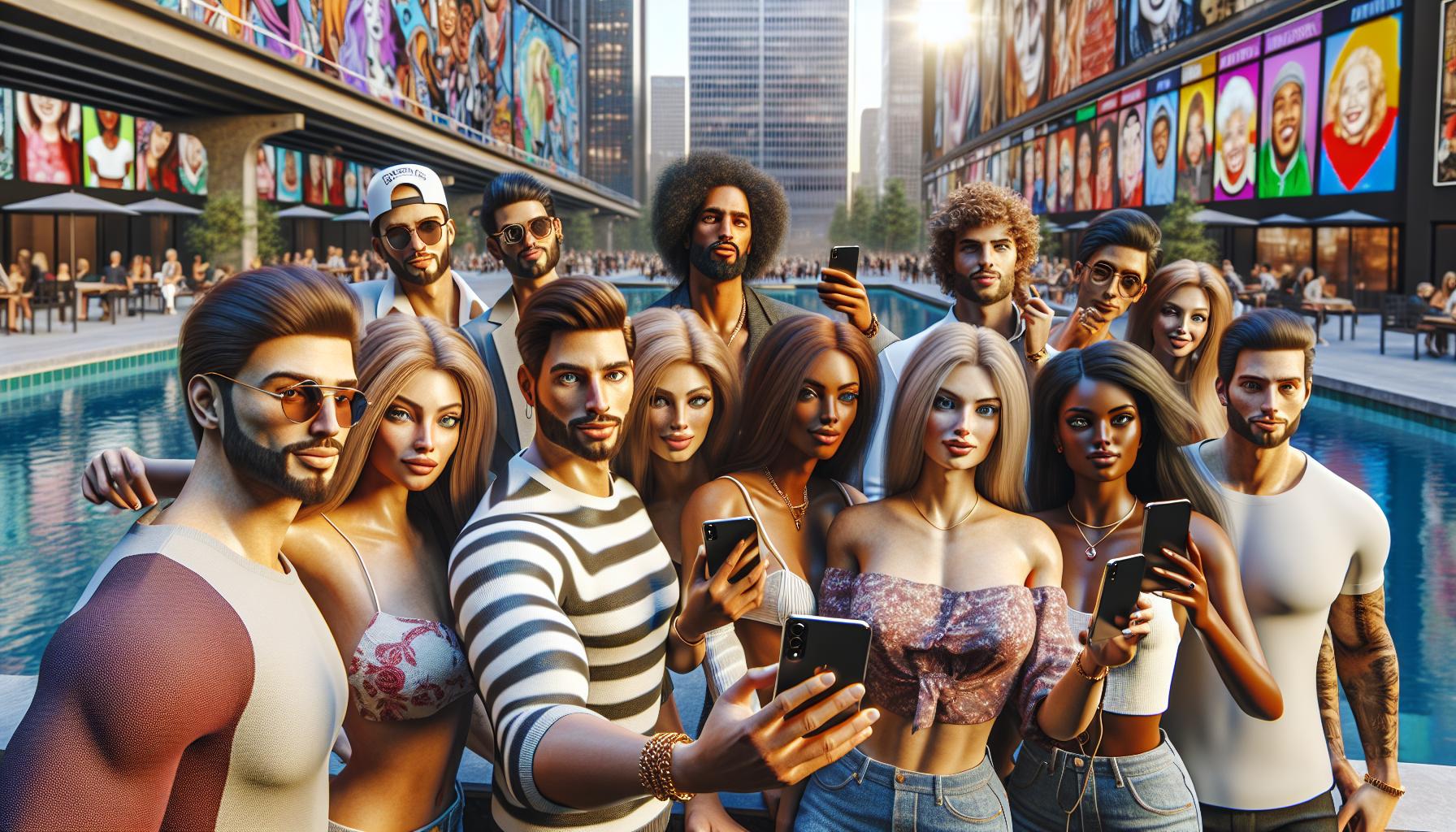In a world where a cat video can rack up millions of views and a single tweet can spark global trends, the rise of social media influencers has transformed the digital landscape. It’s hard to believe that just a couple of decades ago, the idea of someone making a living by sharing their daily life seemed as far-fetched as a flying pig. Yet here we are, with influencers reigning supreme, shaping opinions, and selling everything from skincare to snacks.
The journey of social media influencers is a wild ride through the evolution of platforms, from the early days of blogs to the flashy reels of Instagram. They’ve gone from niche hobbyists to marketing powerhouses, proving that charisma and creativity can turn anyone into a brand. Dive into the fascinating history of these digital trendsetters and discover how they’ve reshaped the way we connect, consume, and create.
History of Social Media Influencers
Social media influencers emerged in the early 2000s with the rise of platforms like Facebook, Twitter, and YouTube. They began as individuals sharing personal experiences and opinions with small audiences. Growth in these platforms enabled influencers to cultivate larger followings and establish their authority in various niches.
Influencers come in many forms, from lifestyle bloggers to fitness enthusiasts. These individuals leverage their knowledge and charisma to engage audiences, often addressing specific interests. They shape consumer behavior and preferences through authentic interactions and relatable content.
The rise of Instagram in 2010 marked a pivotal point in the influencer landscape. Visual content became crucial, leading to the emergence of influencers who excelled in photography and storytelling. Brands recognized this potential, collaborating with influencers to reach target audiences more effectively.
Today, data reveals that influencer marketing generates up to $5.78 billion in revenue annually. Marketers utilize influencer partnerships to tap into niche markets and enhance brand visibility. Many successful influencers earn substantial income through endorsements, sponsored posts, and affiliate marketing.
Authenticity remains vital in this realm. Followers often seek genuine connections with influencers who share their values and interests. Brands benefit from working with influencers who maintain this authenticity, enhancing trust and engagement.
The evolution of social media influencers continues as new platforms emerge and audience preferences shift. TikTok’s rise illustrates this trend, creating new formats for content and engagement. As influencer marketing grows, its impact on consumer behavior and brand strategy becomes increasingly significant.
Early Influencers and Their Impact

The journey of social media influencers began with key developments that shaped marketing and personal branding.
Rise of Celebrity Endorsements
Celebrity endorsements became prevalent in the late 20th century, establishing a model for influencer marketing. Popular figures like athletes and actors endorsed products through traditional media, generating both credibility and consumer interest. With the rise of the internet, this trend transitioned to digital platforms. Customers sought authenticity, prompting brands to align with social media personalities who resembled their audience. Trust emerged as a crucial factor, leading companies to focus on influencers who shared genuine connections with their followers. Brands noticed significant returns on investment, with studies showing that campaigns featuring celebrities generated loyalty and increased sales.
The Advent of Bloggers
Bloggers emerged in the early 2000s, transforming the influencer landscape. Initially, they shared personal insights on platforms such as WordPress and Blogger, attracting niche audiences. Over time, these bloggers developed authority in specific areas, like fashion and travel. Their written content allowed for in-depth storytelling, creating strong community engagement. As social media grew, many bloggers expanded their reach to platforms like Instagram and Twitter. This expansion increased their visibility and followed. Influencers with dedicated blogs created authentic connections, resulting in successful partnerships with brands seeking innovative marketing strategies.
Evolution with Social Media Platforms

Influencers have grown significantly with the evolution of social media platforms. Each platform has played a crucial role in shaping their journey.
The Role of Facebook and Twitter
Facebook and Twitter emerged as early platforms where influencers began sharing experiences with small communities. These spaces facilitated direct interactions between influencers and their followers, fostering a sense of community. Influencers shared valuable content that appealed to specific interests, enhancing their credibility. Over time, as audiences grew, many influencers established themselves as expert voices in niches like travel and food. Engagements became more strategic when brands recognized the potential of partnering with these social media personalities, targeting specific demographics through authentic connections.
The Emergence of Instagram and YouTube
Instagram and YouTube transformed the influencer landscape by prioritizing visual storytelling. Launched in 2010, Instagram focused on imagery, allowing influencers to showcase their lifestyles through curated aesthetics. YouTube offered a platform for longer video content, enabling detailed storytelling and tutorials that engaged viewers deeply. Influencers on these platforms rapidly amassed large followings by consistently producing compelling content tailored to their audiences. Brands began to invest heavily in collaborations, recognizing the power of visual content to drive engagement and sales. This marked a major shift in marketing strategies, making influencers integral to brand promotion and audience outreach.
Characteristics of Successful Influencers

Successful influencers typically share certain characteristics that set them apart in the digital landscape.
Authenticity and Relatability
Authenticity ranks high among the qualities of effective influencers. Followers connect with influencers who display honesty and transparency in their content. Relatable experiences resonate deeply, creating a genuine bond with audiences. Regularly sharing personal stories helps influencers foster this sense of connection. Engaging with comments and feedback enhances interpersonal relationships, further solidifying trust. Their ability to express flaws or vulnerabilities makes them more approachable, driving engagement. As a result, influencers meeting these criteria often see higher interaction rates and loyal followings.
Niche Focus and Target Audiences
Niche focus plays a critical role in influencer success. By concentrating on specific topics, influencers attract dedicated audiences interested in those areas. Establishing expertise in a niche enables influencers to provide valuable insights and recommendations. Identifying target audiences facilitates tailored content that resonates deeply with followers’ interests. They effectively engage communities passionate about topics such as fitness, travel, or beauty. Utilizing analytics tools can help influencers refine their strategies over time. Engaging content in a chosen niche fosters strong brand partnerships and ongoing collaborations.
The Future of Social Media Influencers
The landscape of social media influencers continues to evolve rapidly. Emerging trends will shape the strategies and behaviors of influencers in the years ahead.
Trends in Influencer Marketing
Video content takes center stage as platforms emphasize short, engaging clips. Brands leverage TikTok and Instagram Reels to reach younger audiences, considering their growing popularity. Micro-influencers gain traction due to their authentic connections, offering higher engagement rates. A focus on sustainability and social responsibility shapes influencer partnerships, aligning brands with values that resonate with consumers. Data showcases that up to 82% of consumers prefer brands that take a stand on social issues. Personalization becomes vital as tailored content enhances viewer experience, driving deeper connections. Followers increasingly favor transparency, favoring influencers who share their journeys honestly and openly.
Potential Challenges and Opportunities
Challenges arise with increased competition among influencers, making differentiation essential. The saturation of the market can dilute authenticity, prompting followers to seek more genuine voices. Brands face scrutiny when partnering, as consumers demand accountability and ethical practices. Opportunities exist in the diversification of content formats, such as live streaming and interactive stories, catering to audience preferences. Innovations in technology create avenues for enhanced audience engagement through augmented reality and virtual experiences. Data privacy concerns require influencers and brands to remain vigilant, ensuring compliance with regulations. Establishing strong, trustworthy relationships will remain key to overcoming challenges in an ever-changing influencer landscape.
The history of social media influencers illustrates a remarkable journey marked by innovation and authenticity. As they evolved from simple content creators to influential marketing figures, their ability to connect with audiences has reshaped consumer behavior. The rise of platforms like Instagram and TikTok has further transformed how influencers engage with followers, emphasizing the importance of genuine connections.
Looking ahead, the influencer landscape will continue to adapt to emerging trends and challenges. As consumers demand transparency and authenticity, influencers who prioritize these values will thrive. The future holds exciting possibilities for both influencers and brands as they navigate this dynamic environment together.



